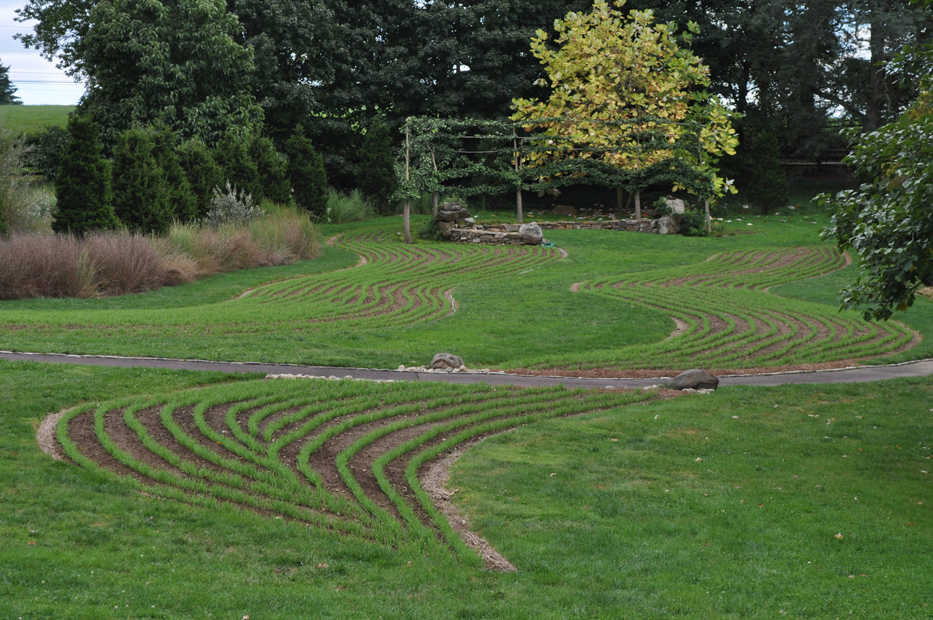Cover crops are plants that gardeners and farmers have, since the beginnings of agriculture, grown not to eat but for the good of the soil.
Blanketing the ground to hold soil particles in place, a cover crop prevents the erosive effects of wind and water. It helps nourish plants by pulling up nutrients from deep in the soil and nitrogen from the air.
Our forebears also appreciated how a cover crop could suppress weeds by shading them out and even, in the case of crops such as rye and oats, by releasing natural, weed-suppressing chemicals into the soil. Organic matter is at the heart of good gardening, and cover crops provide that organic matter, grown in place, so you don’t have to buy and spread other organic materials, such as compost, straw or leaves.
But where do you put cover crops when you already have a full garden?
There’s room. In a vegetable or annual flower garden, you might plant cover crops toward the end of the season as space becomes available. Or a different part of the garden might be set aside each year for a whole season’s growth of some cover crop.
Cover crops also could be planted in among perennials and shrubs to grow for part of the season. The right cover crop might even look decorative among (other) ornamental plants. Crimson clover, for example, puts on such a spectacular show — its blossoms clustered tightly like strawberry popsicles on upright stalks — that you’d hardly suspect it was improving the soil.
Plants in the grass or legume family are commonly used as cover crops. Grasses are valued for their extensive roots, which “plow” through the soil. Once those roots die, they become valuable organic matter — lots of it. For example, 385 miles of roots have been estimated to lie beneath a single rye plant! Legumes’ roots are less extensive, but harbor microorganisms that enrich the soil with nitrogen taken from the air.
Some species or varieties of grasses or legumes are better adapted to drier sites, some to wetter ones, and some to less or more fertile soils. Also consider when the cover crop will be planted: Cool-weather ones are best for the end of the season in the North or during winter in the South; warm-weather cover crops are for summers everywhere.
One commonly used summer cover crop is buckwheat, which is neither a legume nor a grass. (It’s related to rhubarb.)
Seeds for cover crops are available at feed stores, and sometimes at garden centers.
How do you deal with cover crops once they have served their purpose? Annual plants eventually flop down dead on the ground — but not necessarily at an opportune time.
Tilling is the usual option, but is disruptive to the soil and “burns” up much of the organic matter that the cover crop might have added.
Simplest, of course, is to grow something that dies by itself at the right time. In my vegetable garden, I plant oats and field peas in any beds that become free of vegetables before the end of September. The oats and peas thrive in the cool weather until winter, when they die from the cold.
Annual cover crops not killed by winter might be mowed to bring on premature death. This is usually done just before the plant is getting ready to flower. Two or three mowings might be required for some cover crops, such as rye grain.
Innovative strategies for using cover crops more effectively and with less fuss are on the horizon. For example, an annual cover crop like subterranean clover bears seeds in spring that lie dormant, not sprouting until the end of summer. Ideally, you’d plant it once and then it would self-plant at the right time annually thereafter. Another possibility is perennial cover crops that are not overly competitive or that are sufficiently weakened by mowing so that they could be grown alongside crop plants.
There are many ways to use a cover crop on your own “back 40.” Take the time to study specific plants, and then experiment.
Do consider planting a cover crop rather than leaving the soil bare. Bare soil eventually becomes clothed with a natural, less preferable cover crop: weeds.

